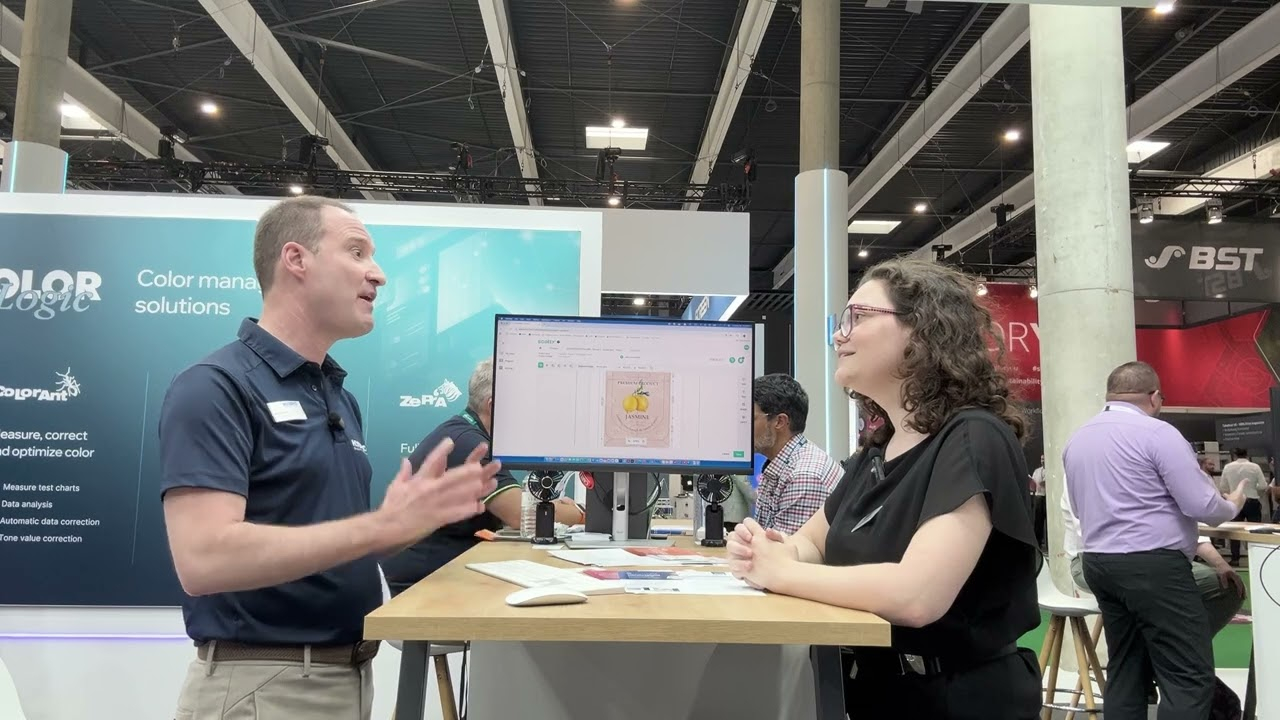IGT to show new products at drupa
IGT will display a number of new and updated products at drupa. Apart from the new automated pressuring device for NBS crumpling tester, the company will also present its new offshoot of the C1 family, the CT1 specially designed for printing on hoses, tubes and cans. IGT will be showing the integrated camera system for the Global Standard Tester 2 and 3H for making computerized measurements of mottle and Heliotest results. On top of that, it will also introduce a tester in the future city series – the Amsterdam.
Improved crumpling test method
The IGT NBS crumple tester is used by bank note printers to simulate how the paper performs under extreme conditions. Until now, a sample piece of paper is put into a sleeve in order to crumple it by hand. Using the NBS Automated Pressuring Device any possible variations in hand pressure have now been eliminated, resulting in a better standardized test, which is good for reproducible test results. The NBS Automated Pressuring Device fits on all versions of NBS crumple testers and can therefore be ordered for use with the existing devices.
IGT CT1
A new version of the C1, the CT1, has been developed especially for printing on a variety of diameters of cans, hoses and tubes including those used in the cosmetics industry. The CT1 is supplied with a variable diameter impression cylinder. In stead of the substrate carrier the impression cylinder is used in this case to carry the can or tube. The standard diameter of the impression cylinder is 66mm. However, many cans and tubes actually have either a smaller or larger diameter. The CT1 can be supplied with an impression cylinder in any desired diameter for cans with an outside diameter of between 16 and 68mm. For smaller diameters the impression cylinder shaft is located higher up in order to make contact between the printing disc and the substrate. Just as with the C1, printing can be done in widths up to 35mm – it is also possible to make a normal C1 print with a substrate carrier.
F1 device with driven anilox roller
The IGT F1 flexo tester is now fitted with separate driven anilox roller. It is possible to ink the anilox rollers beforehand and apart from the inking of the printing forme. The velocity of the anilox rollers is adjustable thereby allowing the anilox cells to be filled better using various types of flexo ink. The separate inking of the anilox disc can improve the printing quality substantially. The F1-UV device with integrated UV drying that was introduced last year, is also fitted with this separate driven anilox roller and has proved to be a success.
GST 2 with camera
The GST 2 with camera to be used for evaluating Heliotests or mottle tests immediately after printing will be introduced at Drupa. The camera will simplify and speed up the assessment of Heliotest strips and mottle tests, no scanner is required anymore and the results appear on screen after a couple of seconds. The camera is positioned above the sector and the print is passed under the camera for scanning immediately after printing, the mottle or Heliotest print image data is sent to the PC where the results are calculated. The results of the tests can also be saved to the same or a separate PC and can be imported to other analysis software or Excel. The scan image data can also be saved and used for determining the twentieth missing dot for either the Heliotest or the degree of mottling. This option is also available on the GST 3H for the Heliotest only.
New model tester: the Amsterdam
The new model Amsterdam can be seen as a combination of the GST-3 (constant velocity) and GST-P (variable velocity) models. However, it is a completely new design using up to date technology with regards to power drives and creating printing pressure. The device is also a leap forward with regard to its computing power whereby the calculation of the measurement data can be carried out internally – all this combined with modern, full color, touch-screen technology providing a large number of extremely user-friendly operator facilities. The Amsterdam has one printing disc shaft and therefore is suitable for printing with one printing disc and can operate at either constant or variable velocities. By combining the two velocity modes, the testing possibilities of both these devices are brought together for, e.g. picking, linting and mottle. As standard an integral camera is fitted for mottle testing allowing the test results to be analyzed immediately.
Stay up to date
Subscribe to the free Label News newsletter and receive the latest content every week. We'll never share your email address.

